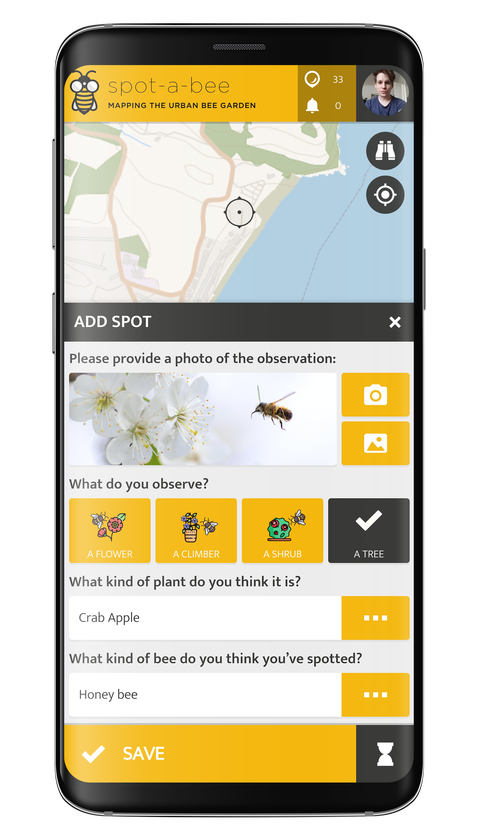"If the bee disappeared off the surface of the globe, then man would only have four years of life left. No more bees, no more pollination, no more plants, no more animals, no more man" (Albert Einstein).
Unfortunately, in the last 60 years, a staggering 90 % of wildflower meadows in the UK fell victim to intensive farming, pesticides, pests, and climate changes, which led to a steep decline in bee populations.
On the bright side, towns, parks and suburban back gardens are stocked with a rich diversity of plants and flowers from around the world and as such could serve as an oasis for one of the most important pollinators.
To determine if this is the case our partners and the University of Glasgow and the Cardiff School of Pharmacy are asking the general public to observe bees and plants in their gardens, towns, cities and villages across the United Kingdom, to take part in this citizen science project.
The Spot-A-Bee app allows Citizen Scientists to observe and document any flowers, shrubs, climbers or trees and the bees on them. Additionally, it contains useful information on those plants and the most common bee species in the UK.
As a bonus, the researches behind Spot-A-Bee also want to understand how planting in urban spaces might affect the production of urban honey.





